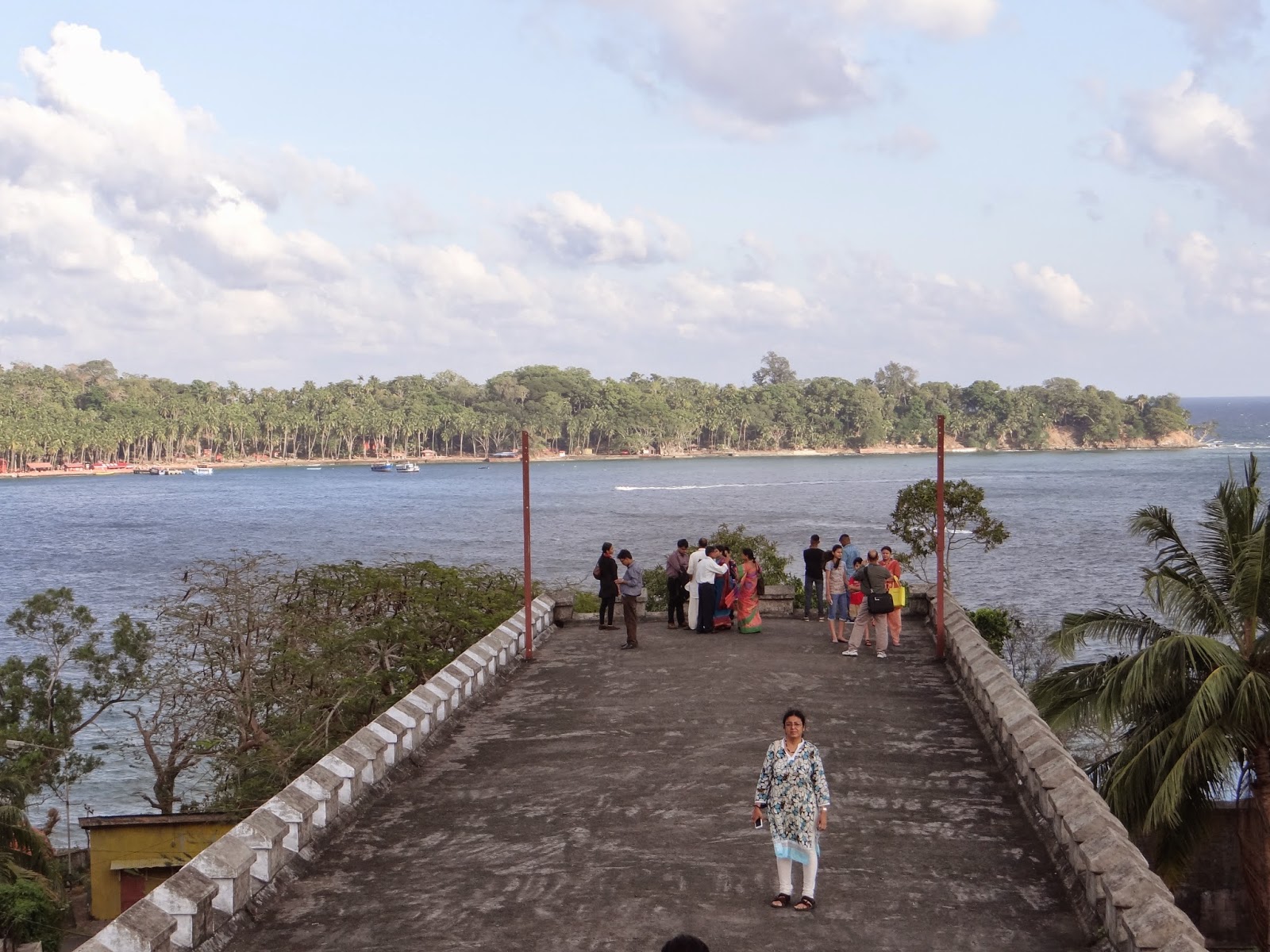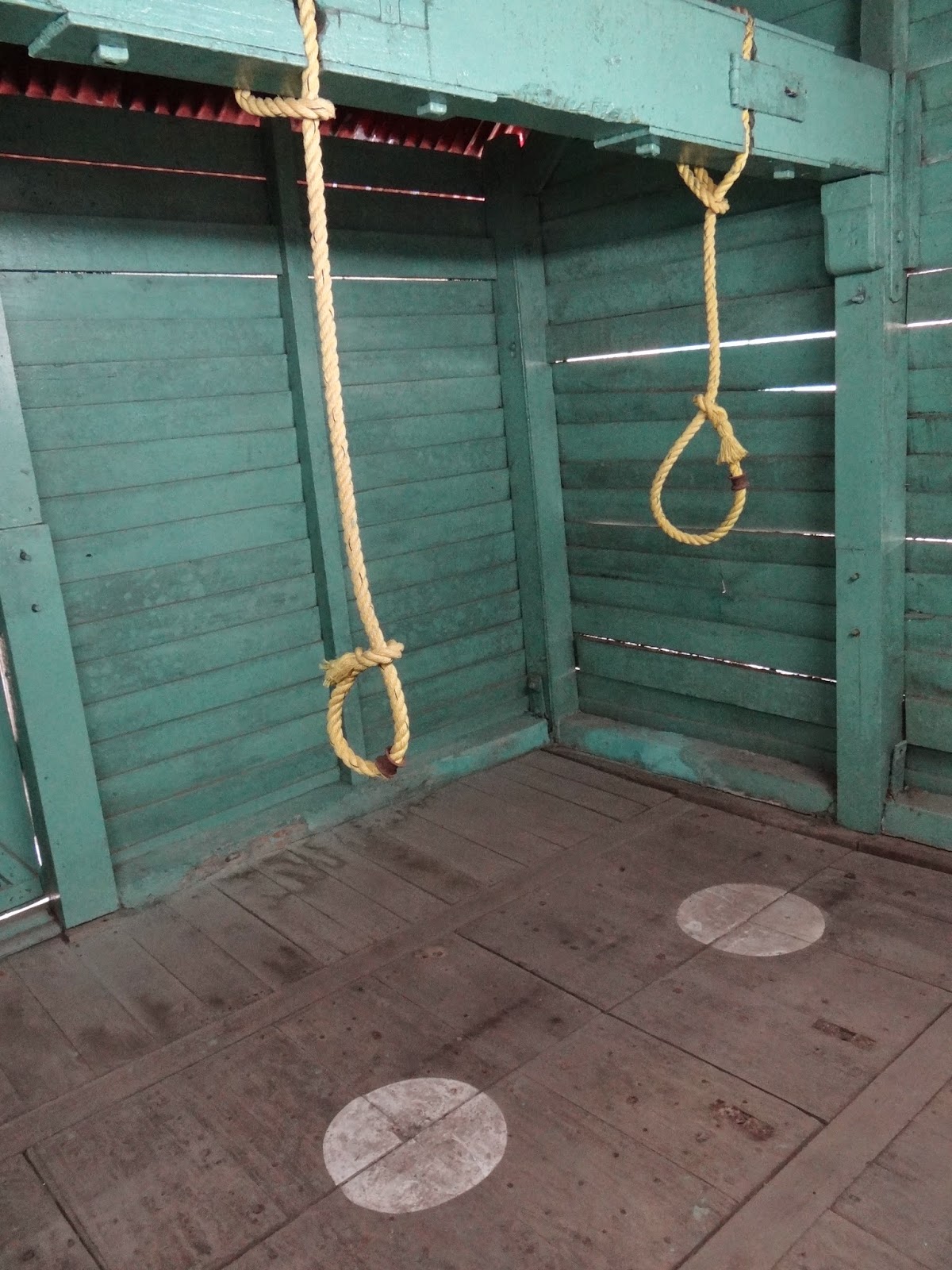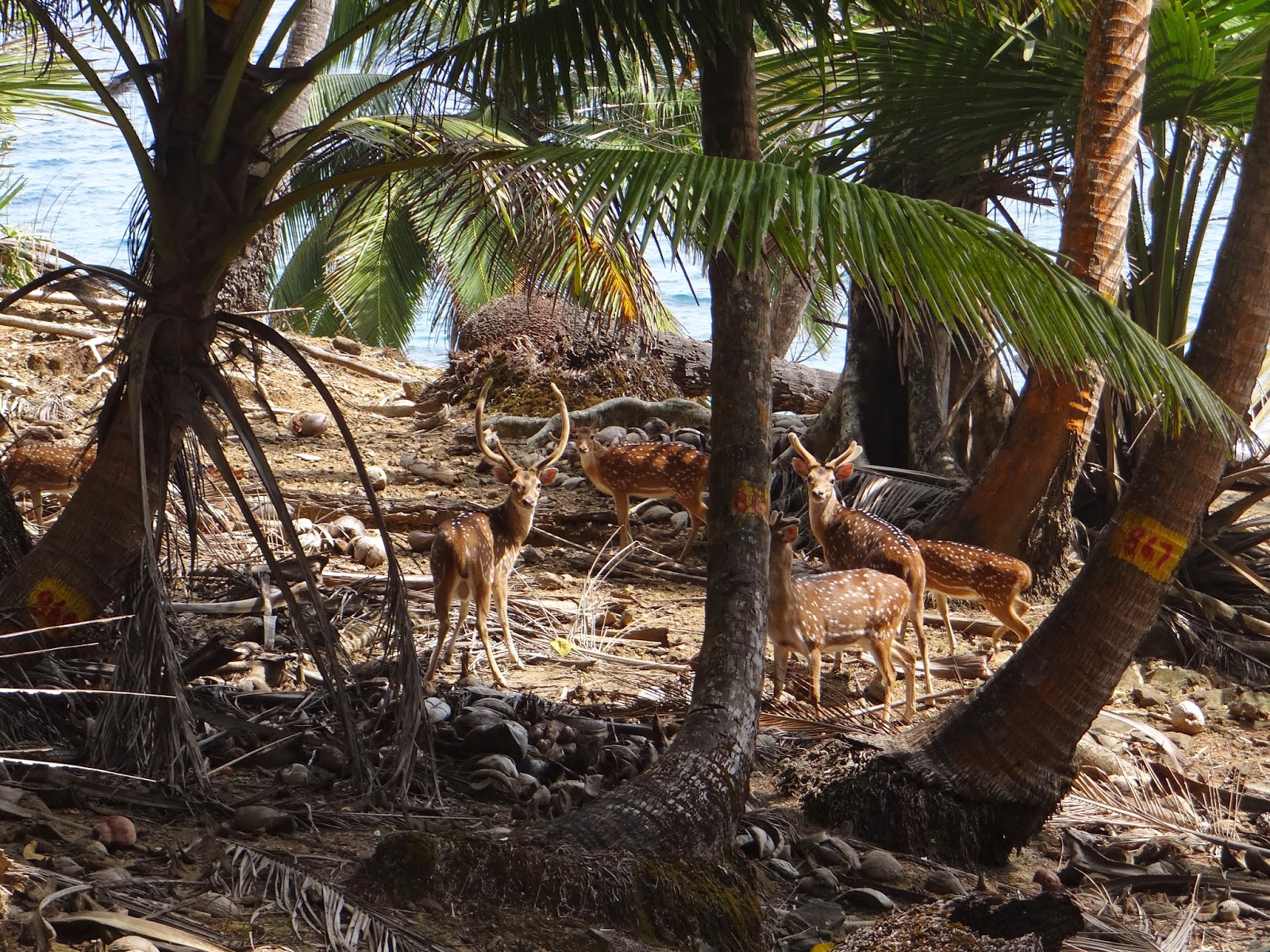Andamans : From Kalapani to Neelapani
We all know about the Andamans from our history books but rarely do we get the opportunity to experience the geography of this very picturesque part of India. Here is a short, photographic record of our visit to this little visited part of India.
We arrived in Port Blair and walked into the pages of the history book that tells us about the Cellullar jail where so many freedom fighters, ( or "terrorists" from the British point of view) were incarcerated or even martyred.
and arrived at Neil ( or perhaps Neel?) Island
and also visited Radhanagar Beach, one of the top ten beaches of the world
We arrived in Port Blair and walked into the pages of the history book that tells us about the Cellullar jail where so many freedom fighters, ( or "terrorists" from the British point of view) were incarcerated or even martyred.
the outside of the jail
inside the jail, during the Sound and Light Show
inside one of the cells
the long corridor along one of the wings
view from the roof
from the watch tower
these were the actual gallows where prisoners were executed and the picture below shows the oil mill that prisoners had to operate to produce their quota of coconut oil
two of the jail wings from the watch tower
this is the room were Veer Savarkar was incarcerated
The cellular jail was referred to as Kalapani, the place beyond the Black Waters of the unknown sea. But today, we see this sea, not as black but as a brilliant shade of blue, the Neela Pani!
This is Elephant Beach on Havelock Island
the sea at Elephant Beach is really so blue
and if you go snorkeling, as we did, you can see coloured fishes swimming in the crystal clear waters
However the he most exciting activity at Elephanta Beach was the undersea walk
where we literally walked, and danced, among the corals and the fishes and had professionals help us and take pictures like this
The hotel at Havelock Island where we stayed was awesome. It was right on the waterfront itself
as everywhere in the Andamans, the sea was an amazing colour of blue
The Makkruze catamaran was our means of getting around the various islands of the Andamans. That is how we departed from Havelock and ...
at the pier at Havelock, waiting for the Makruz to arrive
and arrived at Neil ( or perhaps Neel?) Island
At Neil Island we had the pleasure of watching corals and coloured fishes from a glass bottom boat
and ride JetSkis
Our last port of call was Ross Island, the administrative, social and cultural heart of the British Administration at Andamans that was occupied, along with the rest of islands by the Japanese during WWII and is now naval base for the Indian Navy. There are many remnants of the Japanese occupation here.
these are ruined buildings from the Japanese era
and these are Japanese gun emplacements
exploring Ross Island on foot was almost like living out an adventure from the Famous Five books of Enid Blyton. Islands, forests, deer, abandoned bunkers and what not!
this is far side of Ross Island, the part normally not visited by tourists
we also saw some Japanese Bunkers at Corvyn Beach
Now that we have seen all the pictures let us say a few words about the Andaman Islands. Though these are a part of India they are physically closer to Myanmar and Malaysia. In fact, the islands are a part of the Arakan Range of mountains that run through Myanmar and represent the peaks of mountain range that is otherwise submerged in the waters of the Bay of Bengal. Hence walking through Port Blair will remind you of walking through Darjeeling or Simla -- the roads rise and fall like any hill station road -- but of course the temperature is quite warm since it is very close to the mean sea level. So you can call it a sea level hill station!
Most of the people on the Andamans are Bengali speaking settlers from erstwhile East Bengal and Bangladesh plus Hindi speaking immigrants from the heartland of India. The original people of Andamans -- the so called aboriginals, of negroid stock -- are almost extinct, wiped out after coming in contact with modern society. However small pockets of the original natives survive on reservations where us, modern Indians, are not allowed to go without specific permission from government authorities.


































































Comments